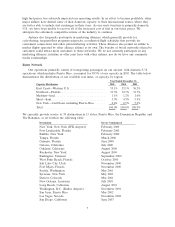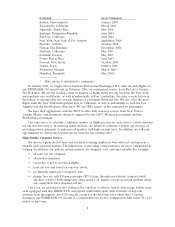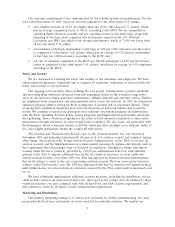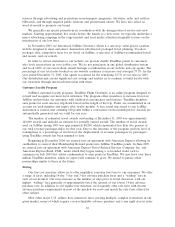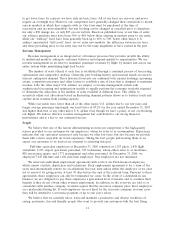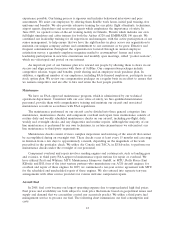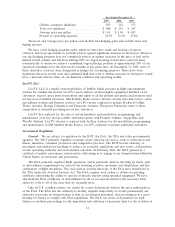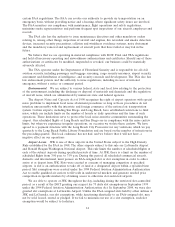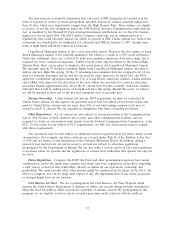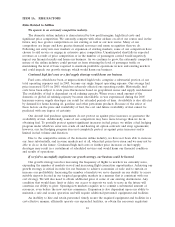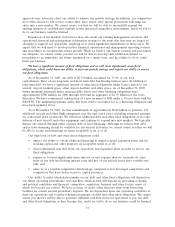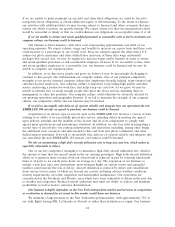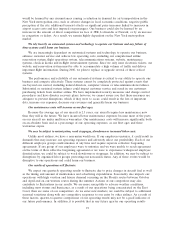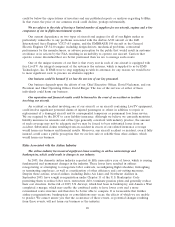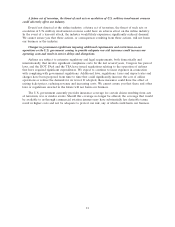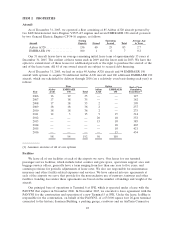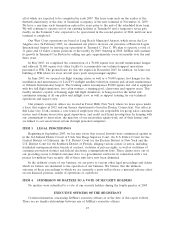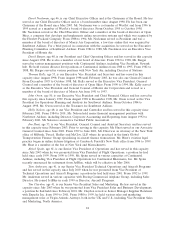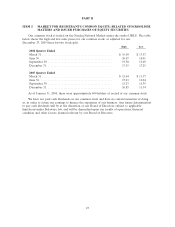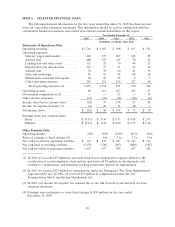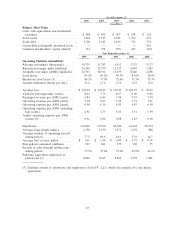JetBlue Airlines 2005 Annual Report Download - page 25
Download and view the complete annual report
Please find page 25 of the 2005 JetBlue Airlines annual report below. You can navigate through the pages in the report by either clicking on the pages listed below, or by using the keyword search tool below to find specific information within the annual report.approvals may adversely affect our ability to achieve our growth strategy. In addition, our competitors
have often chosen to add service, reduce their fares and/or offer special promotions following our
entry into a new market. We cannot assure you that we will be able to successfully expand our
existing markets or establish new markets in this increased competitive environment, and if we fail to
do so our business could be harmed.
Expansion of our markets and services may also strain our existing management resources and
operational, financial and management information systems to the point that they may no longer be
adequate to support our operations, requiring us to make significant expenditures in these areas. We
expect that we will need to develop further financial, operational and management reporting systems
and procedures to accommodate future growth. While we believe our current systems and procedures
are adequate, we cannot assure you that we will be able to develop such additional systems or
procedures to accommodate our future expansion on a timely basis, and the failure to do so could
harm our business.
We have a significant amount of fixed obligations and we will incur significantly more fixed
obligations, which could harm our ability to meet our growth strategy and impair our ability to service
our fixed obligations.
As of December 31, 2005, our debt of $2.33 billion accounted for 71.9%of our total
capitalization. Most of our long-term and short-term debt has floating interest rates. In addition to
long-term debt, we have a significant amount of other fixed obligations under leases related to our
aircraft, airport terminal space, other airport facilities and office space. As of December 31, 2005,
future minimum payments under noncancelable leases and other financing obligations were
approximately $786 million for 2006 through 2010 and an aggregate of $1.95 billion for the years
thereafter. We have commenced construction of a new terminal at JFK under a 30-year lease with the
PANYNJ. The minimum payments under this lease will be accounted for as a financing obligation and
have been included above.
As of December 31, 2005, we had commitments of approximately $6.44 billion to purchase 192
additional aircraft and other flight equipment over the next seven years, including estimated amounts
for contractual price escalations. We will incur additional debt and other fixed obligations as we take
delivery of new aircraft and other equipment and continue to expand into new markets. We typically
finance our aircraft through either secured debt or lease financing. Although we believe that debt
and/or lease financing should be available for our aircraft deliveries, we cannot assure you that we will
be able to secure such financing on terms acceptable to us or at all.
Our high level of debt and other fixed obligations could:
• impact our ability to obtain additional financing to support capital expansion plans and for
working capital and other purposes on acceptable terms or at all;
• divert substantial cash flow from our operations and expansion plans in order to service our
fixed obligations;
• require us to incur significantly more interest or rent expense than we currently do, since
most of our debt has floating interest rates and five of our aircraft leases have variable-rate
rent; and
• place us at a possible competitive disadvantage compared to less leveraged competitors and
competitors that have better access to capital resources.
Our ability to make scheduled payments on our debt and other fixed obligations will depend on
our future operating performance and cash flow, which in turn will depend on prevailing economic
and political conditions and financial, competitive, regulatory, business and other factors, many of
which are beyond our control. We have no lines of credit, other than two short-term borrowing
facilities for certain aircraft predelivery deposits. We are dependent upon our operating cash flows to
fund our operations and to make scheduled payments on debt and other fixed obligations. We cannot
assure you that we will be able to generate sufficient cash flow from our operations to pay our debt
and other fixed obligations as they become due, and if we fail to do so our business could be harmed.
17


